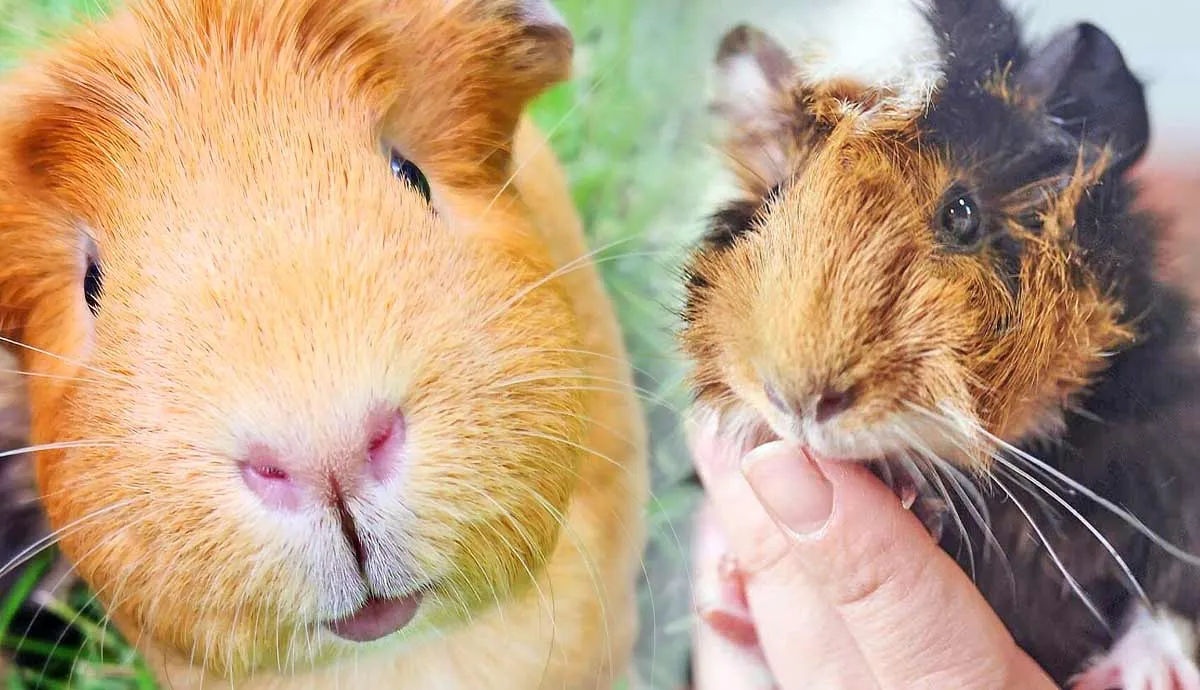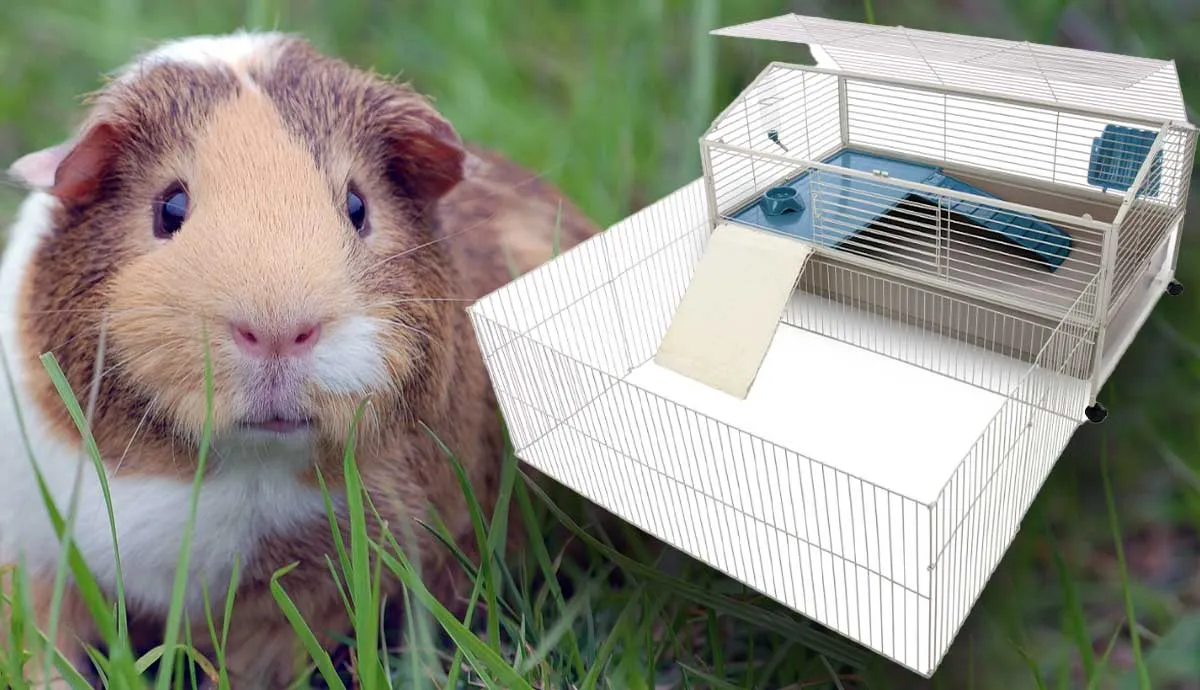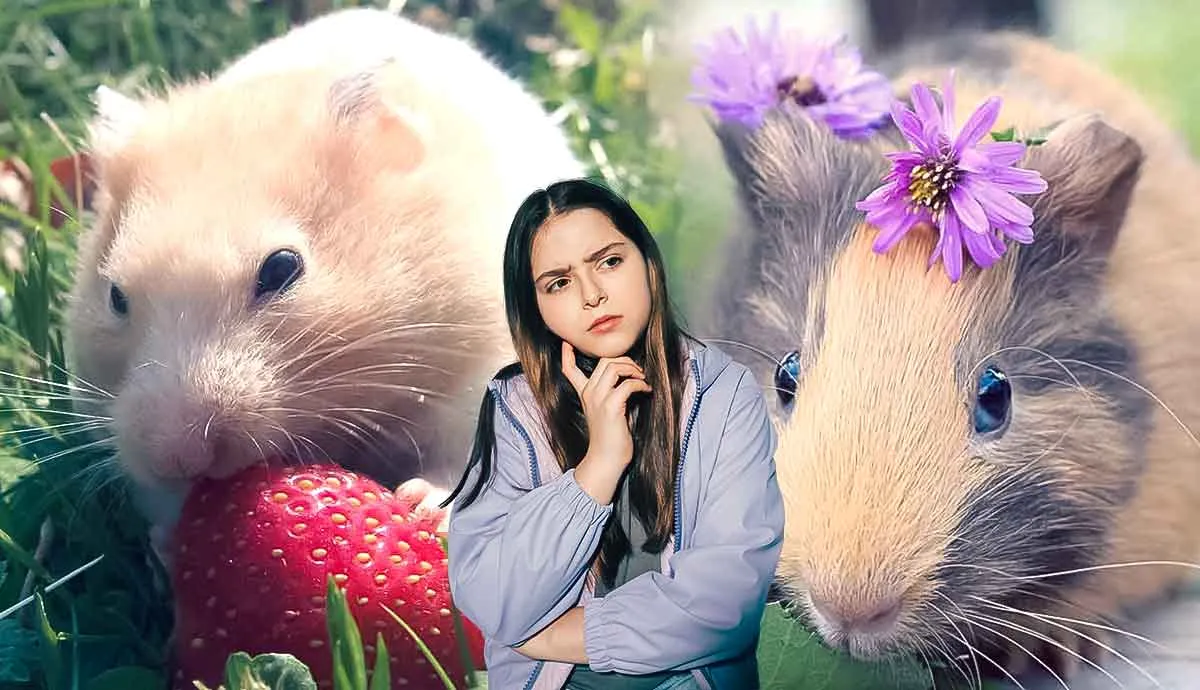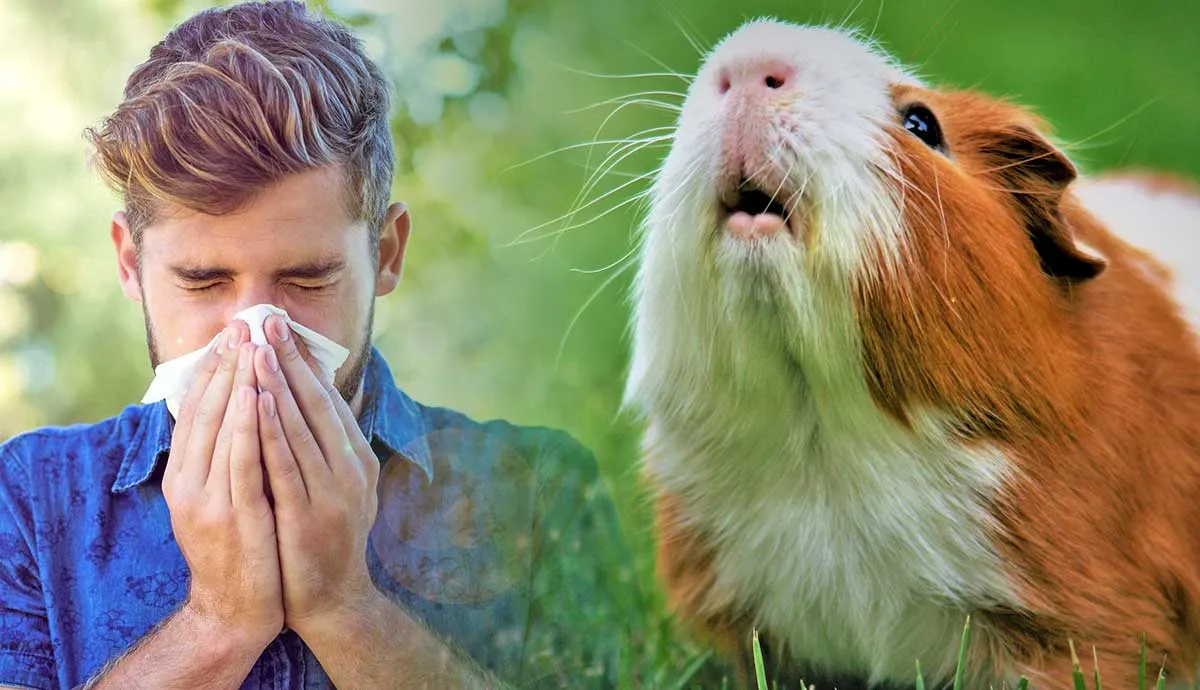While overeating is a concern, guinea pigs need to eat constantly to keep the beneficial flora in their gut happy and active. It’s up to you to provide a diverse, nutritious diet that will accomplish this goal without compromising their overall health.
In this guide, we explore 6 key tips to keep in mind when meal planning for your guinea pig.
1. Provide an Unlimited Supply of Hay or Grass
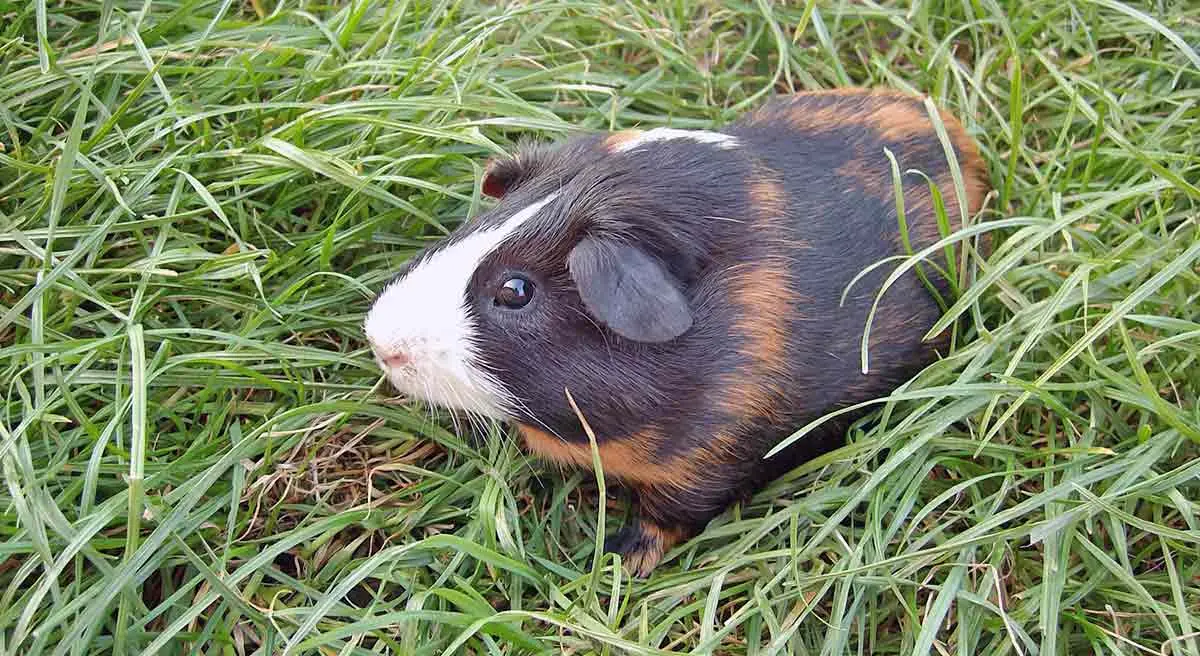
Like horses, guinea pigs need to graze constantly to keep things moving. Grass and hay provide plenty of fiber to keep your guinea pig’s gut active without providing too much sugar or disrupting their beneficial flora. Because this should account for about 80 percent of their diet, you will want a dedicated hay spot in your guinea pig’s cage.
Depending on their age, your guinea pig will need either alfalfa or hay. Juvenile guinea pigs may eat alfalfa until about 6 months old. At this point, they should switch to timothy or orchard hay that doesn’t have the same high calcium levels. You can also provide pesticide-free grass clipping that has not been contaminated by other animals.
Hay also works well to keep a guinea pig’s ever-growing incisors trimmed short and prevent issues like overgrown teeth.
2. Find a Balanced Pellet Base
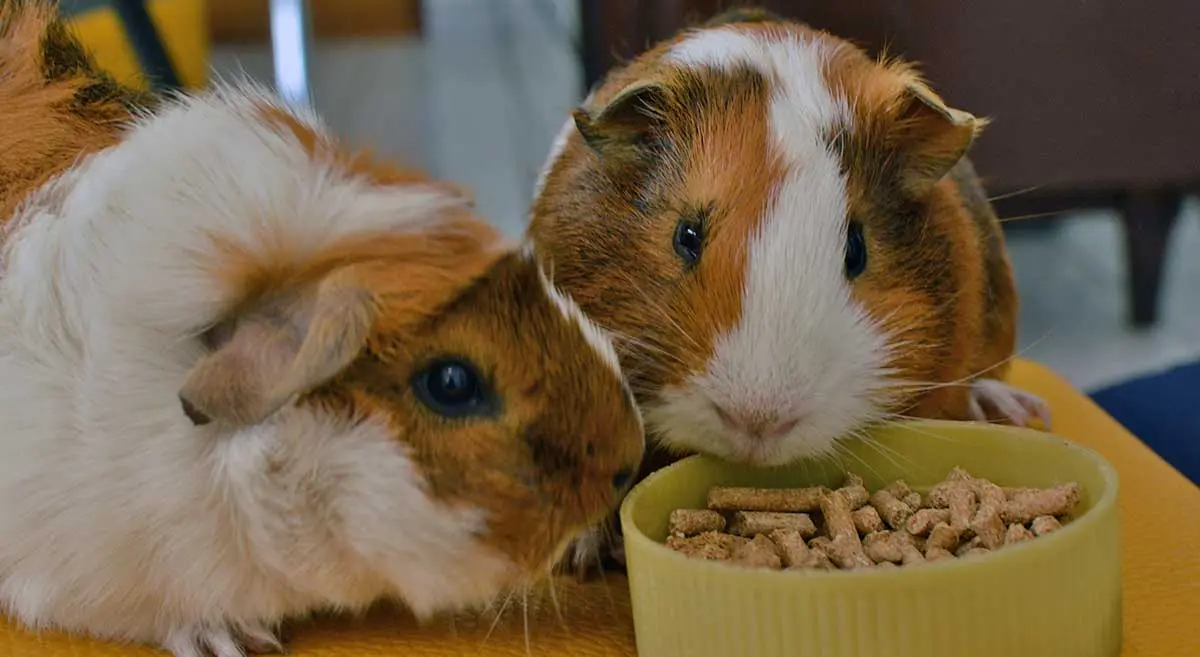
Pellets should not be the only thing you offer your guinea pig, but they can be an efficient way to pack fiber and nutrients into their diet. When shopping, look for timothy-based, vitamin-C fortified pellets like Oxbow Essentials Adult Guinea Pig Food. If your guinea pig is younger than 6 months, feed them a juvenile guinea pig diet that has higher calcium.
Guinea pigs should only eat about 1 to 2 tablespoons of pellets each day. When shopping, only buy a bag you can confidently finish within 90 days. Vitamin C degrades rapidly and will not be viable after this time.
3. Enrich Their Diet with Nutritious Fruits and Vegetables
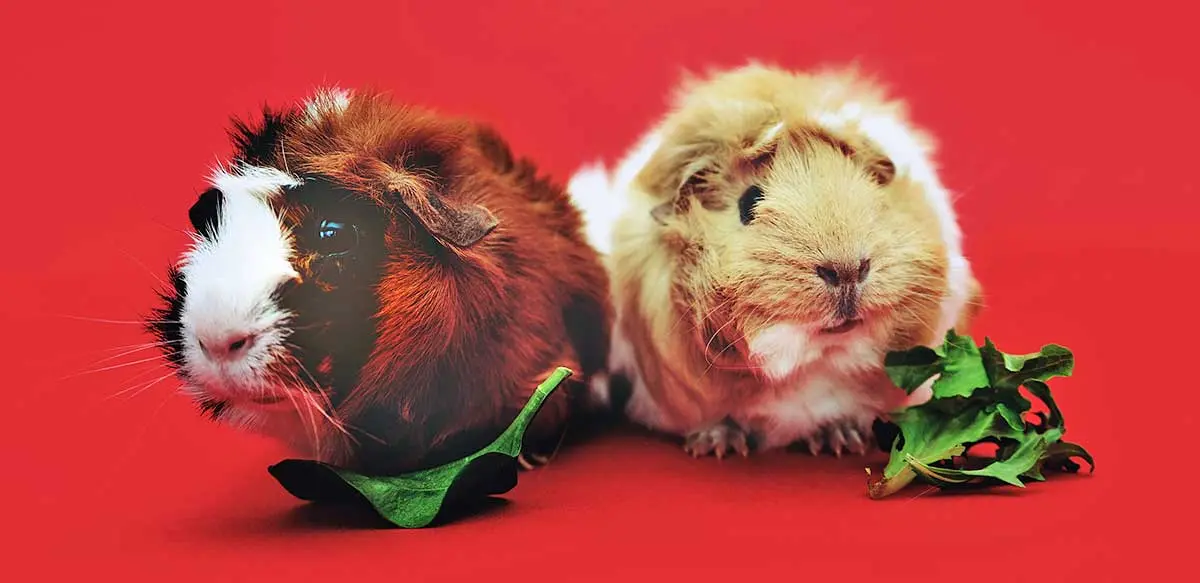
Any online guinea pig group you join or page you follow will be full of daily salad pictures. While your daily salads don’t need to look as Instagram-worthy, they should be part of your guinea pig’s diet.
Most daily salads include a green base (e.g., a mix of Swiss chard, mustard greens, turnip greens, and romaine lettuce), a source of vitamin C (e.g., sweet peppers or broccoli), and a small variety of guinea-pig-safe herbs, fruits, and vegetables.
Some favorite treats include:
- Basil
- Blueberries
- Beets
- Apples
- Carrots
- Mint
- Cilantro
Some fruits and vegetables are too dangerous to offer at all. For example, iceberg lettuce has a low nutritional value and high-water content that’s more likely to cause diarrhea. Unlike hamsters and gerbils, guinea pigs should not eat nuts or seeds; they’re too high in carbs. Foods like avocados and onions are outright deadly.
Guinea pigs do not make their own vitamin C, a nutrient necessary for proper growth and maintenance of your skin, musculoskeletal systems, and immunity. To keep everything functioning properly, guinea pigs should eat 10 to 50 mg of vitamin C per day.
Instead of using water additives that can do more harm than good, we suggest adding this directly to your guinea pig’s diet. One easy way to do this is to feed your guinea pig 2 half-inch slices of green or yellow bell pepper each day.
4. Encourage Foraging
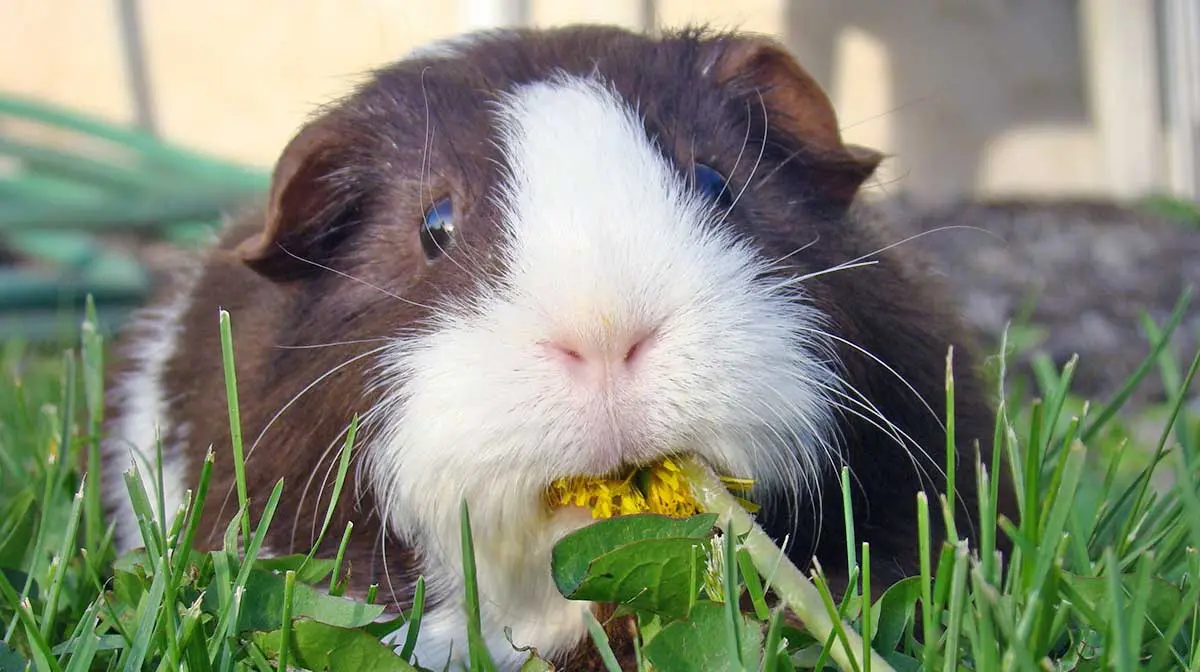
Guinea pigs are born grazers, and foraging is a fantastic enrichment idea even for our pampered companions. Even better, you can grow or find some foraging favorites without emptying your wallet. Dandelion leaves are fairly popular, and parsley leaves are easy to grow. If you have a flower garden, consider roses, marigolds, or cornflowers; their petals make tasty treats.
If you can safely allow your guinea pigs into the garden to forage, even better. If not, make sure anything you harvest is free of pesticides, chemicals, and contamination from other animals. When in doubt, go without. Sites like HayPigs offer enriching foraging blends for situations like this.
5. Understand Diet-Related Health Issues
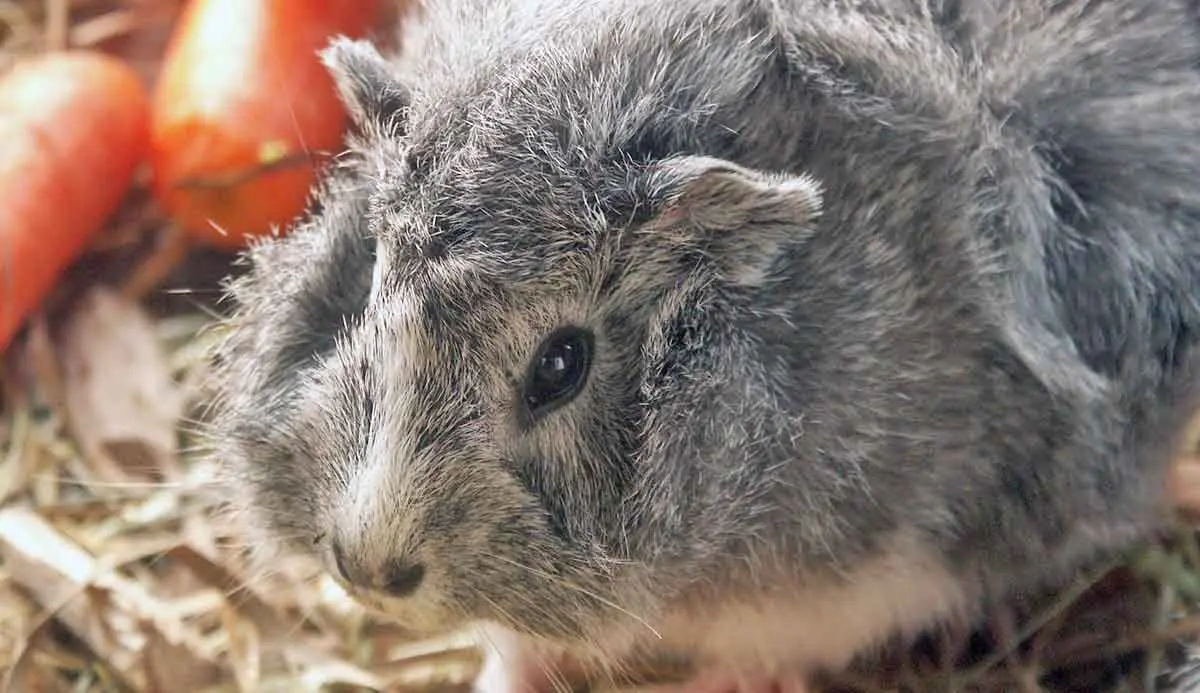
Diet sets the foundation for health, and many of the issues that pop up in guinea pigs may directly relate to what they eat (or what they’re lacking). Understanding the most common health issues in guinea pigs is just another part of being a responsible owner.
Make sure you introduce new foods slowly and in moderation to limit upset stomach and diarrhea, taking time to mix them with a mostly familiar diet. Diarrhea can also indicate too much or too little water, and you may need to cut down on the fresh veggies you provide.
Bladder stones have no clear cause, but guinea pigs that eat a high-calcium diet seem to deal with them more often. Make sure you switch from alfalfa to hay at the correct age and limit calcium consumption in your adult guineas.
Keep an eye out for signs of gut stasis. Unlimited hay goes a long way to keep the digestive tract moving, but it can slow down and even stop with little warning. Teeth grinding, diarrhea, lethargy, and decreased appetite are major warning signs to get your guinea pig to the vet to deal with this issue.
With prompt action and a suitable recovery diet, these issues are rarely fatal.


